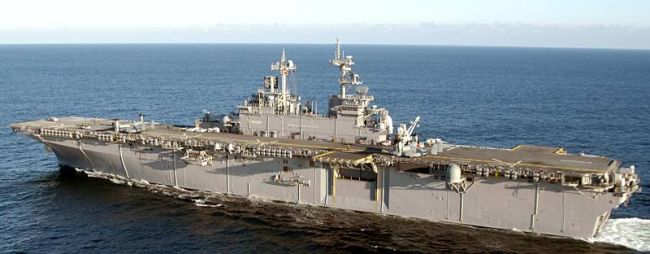WASHINGTON (AFNS) — The Air Force vice chief of staff discussed many topics concerning the current and future state of America’s airpower at the Air Force Association’s Global Warfare Symposium Nov. 18 in Los Angeles.
Airpower has made the United States a global power, Gen. Phil Breedlove told an audience of approximately 300 AFA members, Airmen and industry officials attending the annual conference.
“It has allowed us to achieve unprecedented connectivity, facilitating our nation’s economic rise as well as our ability to influence events half a world away within hours,” he said.
Breedlove said America is an air and space nation and in almost every category the U.S. has been the global benchmark for air and space power.
“The unique combination of speed and flexibility has made airpower the key to our strategic agility — and in the future of smaller, less-deployed military forces, agility will be the name of the game,” he said.
Speed and flexibility, two tenants of airpower, provide the Air Force with the strategic, operational and tactical ability to rapidly move between theaters of operation, Breedlove said. For example, with on-going air operations in Iraq and Afghanistan, the Air Force was able to simultaneously provide support to the Japan earthquake humanitarian operations and provide combat air support to NATO over Libya.
“This ability to rapidly move from one theater of operation to the next, uninhibited by mountains, deserts, straits or vast oceans, allows our national leaders the strategic flexibility to choose when to engage — and when to disengage — from conflict,” Breedlove said.
The success of air operations in the quick build-up and response to the Libya crisis relied on intelligence, surveillance and reconnaissance assets for not only strategic, but operational and tactical planning as well, the general said.
“We had neither the time nor the on-station assets to begin building detailed target lists for strike aircraft,” Breedlove said. “We threw a whole range of ISR assets at the problem and relied on the ingenuity and flexibility of our Airmen to piece them together.”
Lessons learned from the Libya operation and other recent operations highlighted a need to defeat anti-access and area-denial strategies of potential adversaries, he said. The Air Force also recognized the need to develop a closer air-sea integration with the Navy.
Without full institutional support, the arrangements and cooperative successes between the two components would atrophy again and for this reason a strategic partnership has been formed with the creation of the Air-Sea Battle Office at the Pentagon, Breedlove said.
“Together, the Air Force, Navy and Marine Corps are developing the Air-Sea Battle operational concept in order to create an enduring partnership between our nation’s air and sea services to defeat these (anti-access and area-denial) strategies,” Breedlove said.
Budgetary constraints affect how the growing threat of anti-access and area-denial adversaries will be addressed, he said.
“Our task would be daunting even in the relatively permissive budget environments of past decades, during which we enjoyed a greater ability to purchase cutting-edge weapon systems and capabilities,” Breedlove said. “Our budgetary strategy has been to reduce capacity while maintaining capability.”
The future Air Force will be capable of accomplishing many of the mission sets of today, but will do so at a significant level of risk and with less capacity to respond to multiple crises, he added.
“I am confident that American airpower, combined with the complimentary capabilities of our joint and coalition partners, will continue to be decisive, no matter the foe we face,” Breedlove said.
Source:
U.S. Department of Defense
Office of the Assistant Secretary of Defense (Public Affairs)

 von
von 